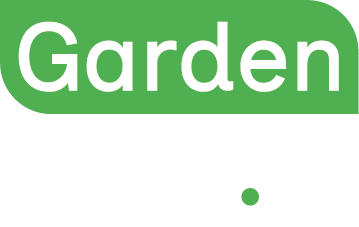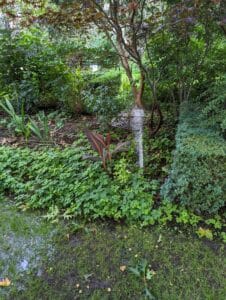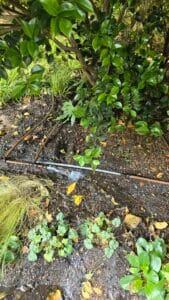A Fresh Take on Garden Square Seating Long the reserve of Teak Benches, an increasing number of Garden Squares...
The Ongoing Risks of a Hosepipe Ban
With warm and dry weather forecast throughout August into September, an extension of the Thames Water hosepipe ban to cover Central London can’t be ruled out. Furthermore, with reservoir, and in particular, ground water levels low, the risk of a hose pipe ban in early 2026 has significantly increased, with conditions similar to those that preceded the April 2012 hosepipe ban.
Water supply is particularly important to Urban Gardens. Whilst “drought resistant gardens” are to be applauded in the rest of the UK, it is rarely practical for Central London Gardens, and such pursuits will almost certainly have a detrimental impact on local wildlife.
The Urban Heat Island effect means London is hotter than the rest of the UK. The land closest to most Garden Squares is impermeable, with the underlying subsoil leaching water away from its permeable neighbour. Natural water sources (like streams and tributaries) have long since been converted into sewers, diverted, or otherwise built over. Then to compound the issues, the majority of Squares have a thick tree canopy forming a natural umbrella, pushing water away from the Garden towards non-permeable surfaces and thereon into sewers.
If it is accepted that green spaces significantly improve the London environment, though require supplementary watering to perform that function, the question then becomes how to support those green spaces before and during a hosepipe ban.
Understanding your TUBs from your NEUBs

A Hosepipe Ban is the colloquial term for a usage ban, and for most consumers, can come in two tiers.
A Temporary Use Ban (TUB), is what most people think of as a Hosepipe Ban. It is the first, and least severe stage of a water restriction programme. Thames Water are required to give at least 7 days notice ahead of such a ban (though their own policy aims for at least 21 days), and must consult with key stakeholders (e.g. Consumer Council for Water, Environment Agency) ahead of introducing a TUB.
A Non Essential Use Ban (NEUB) is a much rarer, and more severe, second tier of restrictions, deployed when a TUB can’t sufficiently preserve water reserves. An NEUB requires a formal application to the Secretary of State.
Exemptions to Usage Bans
TUBs can only restrict specific activities listed in the Water Use (Temporary Bans) Order 2010, it is at the discretion of Water Company as to which of the specific activities they will restrict. Almost all the activities are related to hosepipes or hosepipe-equivalent devices (sprinklers, drip systems, etc.).
Crucially, manual watering is specifically excluded from the Legislation, meaning Thames Water have no power to stop a Garden Square / its residents (think volunteer army) from watering by Watering Cans during a TUB. It is therefore advisable for Garden Squares to stock up on Watering Cans as soon as, if not before, a hosepipe ban is mooted.
Whilst efficient irrigation systems, such as drip pipes, are specific activities which the Water Companies can restrict, to date, they have historically fallen into a Discretionary Universal Exception (granted by all Water Companies), perhaps noting the importance of incentivising the installation of such systems.
Thames Water’s active Drought Policy continues to exempt Drip Irrigation Systems, and as expected, they are exempt under the current Hosepipe Ban applied to regions outside of Central London.
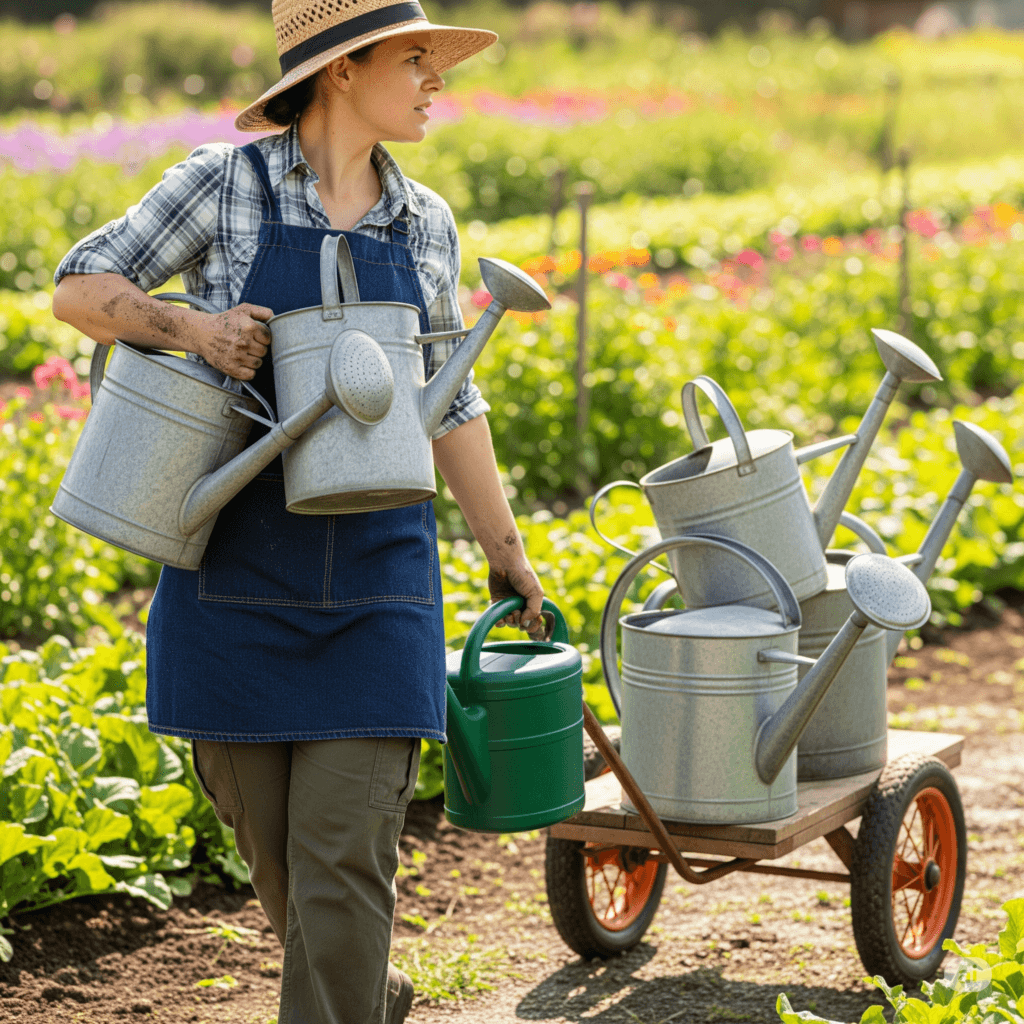
Water Efficient Irrigation Systems
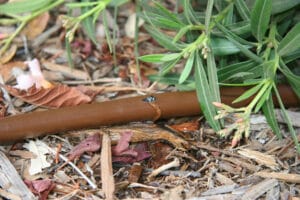
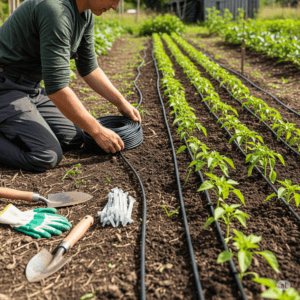
Most irrigation systems are intrinsically more efficient than watering through a hosepipe and sprinkler, because Irrigation Systems can be set to irrigate in the evenings and early mornings when less water will evaporate from the ground. Watering cycles can also be optimised to saturate the ground, but stop before any water-logging and run-off occurs.
However come a TUB, the water companies will only exempt Drip Systems that “place water drip by drip directly onto or beneath the soil surface. It must not cause surface run off or dispersion of water through the air using a jet or mist.”
This limits Garden Squares looking to irrgate a Garden through a Hosepipe Ban to using drip-pipe irrigation, which comes with its own set of challenges that we will come to later.
It is important to note the exemption requires such systems are fitted with a pressure reducing valve to prevent overwatering/blow-out.
To prevent water contamination, broader UK Regulations (Water Supply Regulations, 1999) and design standards (BS EN 1717) require that such systems are fitted with a Double Check Valve and DB Valve.
Hybrid Irrigation Systems
The good news is professionally installed irrigation systems can combine zones of TUB-exempt drip pipes with zones of TUB-forbidden (higher volume) pop-up sprinklers that can be turned off in the event of a TUB.
Even better news: adjustable attachments can be added to drip-pipes that allow them to spray water over large distances under normal circumstances, and be shut off (to revert to a drip-only system) during TUBs.
Attachments are added simply by punching a 4mm hole on the topside of the drip-pipe, and inserting the barbed sprayer/shrubber.
- Microsprayers emit a circular spray and come in 90°, 180° and 360° varieties
- They can be adjusted simply by twisting them clockwise (on / more water) to anticlockwise (off/less water)
- At 1 bar of pressure, a 360° spray-emitter can deliver 64 litres of water an hour over a diameter of 2.8 meters
- Sprayers are ideal for getting water onto the leaves of the plants and covering large areas
- Shrubbers are almost identical to sprayers, except they emit trickle streams of water rather than a spray/mist
- At 1 bar of pressure a shrubber can deliver 40 litres of water an hour over a diameter of 50cm
- They are ideal for getting water into the soil in small areas
- Shrubbers are also perfect for replenishing ground-level bird baths, and other water features (as pictured)
These attachments can also allow you to increase the spacing between drip pipes. Typically drip-pipes should be spaced between 30-45cm apart, however if the approach of the system is to use sprayers/shrubbers, the pipes can be spaced further apart, lessening the visual impact in normal times, but still delivering some water during a TUB.
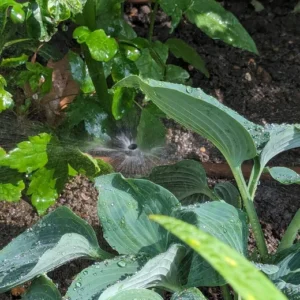
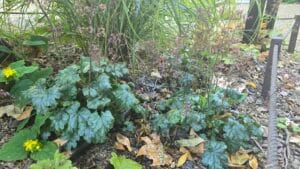

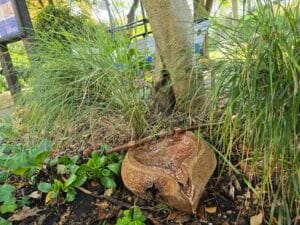
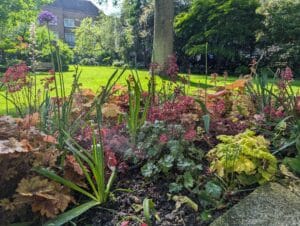
Challenges with Drip Pipes
All irrigation systems require maintenance, and there is frequently a balance between frequency of maintenance vs. complexity of maintenance.
Pop-up sprinklers (not TUB compliant), are typically more robust, though will require servicing at least once a year, and when they do go wrong, typically require a professional to repair or replace.
Drip-pipes are less robust. Sitting above the ground, they are more prone to being tripped over or hit by spades, causing blow-outs whereby water gushes out of a pipe at the system pressure. The good news is that they are incredibly simple and inexpensive to repair when they do, though Gardens should plan for at least a few hours a month to inspecting and repairing a drip pipe system.
Foxes can also present a further issue for Drip Pipes. In Gardens with no other water sources, foxes will be prone to chewing on foxes and cables in search of food. The best solution is to install 1 or more water features in your gardens that can support birds / butterflies, whilst also keeping foxes away from other infrastructure.
Getting more from your Hosepipe
Gardens looking to weather a mid-summer hosepipe ban would be well advised to invest in their hose and sprinkler infrastructure.
Despite spending tens of thousands of pounds a year on manpower, many Garden Squares still rely on static sprinklers, fed from decrepit hoses, connected to difficult to access tap-points. The net result of this is repeated wasted time/effort on the part of contract gardeners to achieve the desired result – getting water in the soil.
For many Gardens we recommend installing high quality yellow hoses (lessening resident trip hazard) on professional grade hose trolleys, attached to above ground tap points.
Efficient watering can be achieved by use of self propelled sprinklers, such as the Nelson Rain Train. These sprinklers drive back along a set out hose pipe, using the power of the water to drive the sprinkler forward. The Nelson Rain train has 3 speed modes, an automatic shut-off ramp, and adjustable spray arms with a maximum watering diameter of 16.5 meters.
Self Propelled Sprinklers can be set to run in the evening when evaporation is less, and can water distances up to 80 meters over 3-8 hours (depending on speed settings).
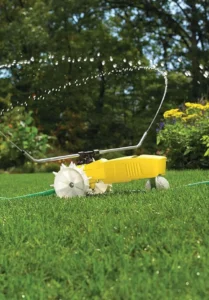
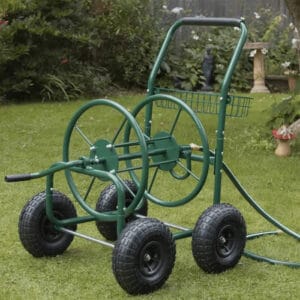
How We Can help
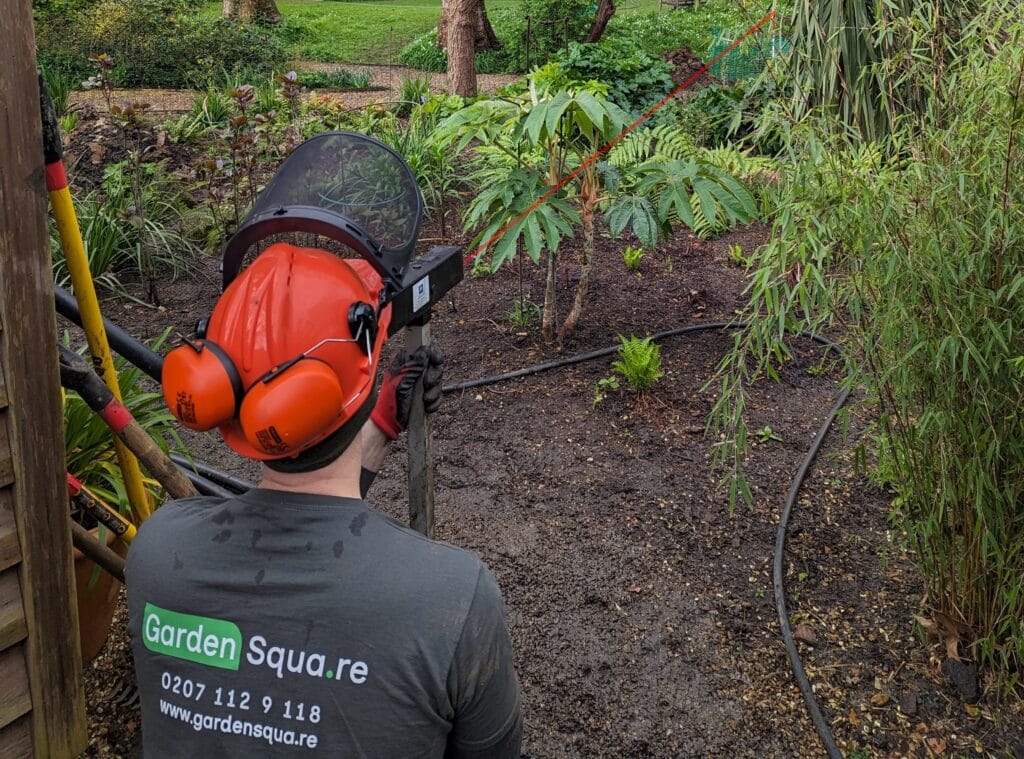
We have extensive experience in installing and maintaining irrigation systems.
For Gardens not ready to install comprehensive irrigation systems, we can still help by improving their watering infrastructure, making taps readily accessible, installed above ground on lockable, rot proof posts. We can provide professional grade hosepipes on sturdy and easy to use horse-carts, along with supplying, and offering training on the use of, travelling sprinklers.
For Gardens looking to install new irrigation systems, we can work with you to specify a system that will support your botanical needs in normal times, and minimise plant death during hosepipe bans.
For those with existing systems we can help optimising the system, installing new controllers, upgrading drip lines, and ensuring the contract gardeners / caretaking team have the neccessary parts, tools and training to maintain the system going forward.
We also salvage equipment from modified systems for resale, including irrigation tanks, allowing us to offer cost-effective solutions for those on tight budgets.
Our broader experience installing utilities, including through non-disruptive installation methods such as Impact Moling and Thinline Trenching, allows us to find innovative solutions for installing comprehensive irrigation with minimal disruption to your garden.
Please feel free to get in touch today regarding your irrigation needs.
Previous Story
2025 Q3 Newsletter
Next Story

